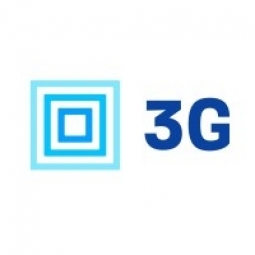Customer Company Size
Large Corporate
Region
- America
Country
- United States
Product
- 3Gtms platform
Tech Stack
- Transportation Management Software
Implementation Scale
- Enterprise-wide Deployment
Impact Metrics
- Productivity Improvements
- Cost Savings
- Customer Satisfaction
Technology Category
- Functional Applications - Transportation Management Systems (TMS)
Applicable Functions
- Logistics & Transportation
Use Cases
- Fleet Management
- Supply Chain Visibility
Services
- System Integration
About The Customer
NFI is a fully integrated North American supply chain solutions provider headquartered in Camden, New Jersey. Privately held since its inception in 1932, NFI generates more than $2 billion in annual revenue and employs more than 12,600 associates. NFI owns facilities globally and operates more than 50 million square feet of warehouse and distribution space. Business lines include dedicated transportation, distribution, brokerage, transportation management, port drayage, intermodal, global logistics, and real estate.
The Challenge
NFI, a fully integrated North American supply chain solutions provider, was using two TMS platforms to operate its business. Due to NFI’s growth and its evolving levels of sophistication, the company identified opportunities to expand their technological focus to maximize productivity in an effort to pass on savings to customers. The company was facing challenges in managing cross-docking from a consolidation or visibility standpoint. The legacy TMS couldn't handle the complexity of cross-docking, creating gaps in the process.
The Solution
NFI chose to manage all load planning and execution processes on the 3Gtms platform and retire their legacy TMS system. Additionally, NFI is also using the 3Gtms optimization algorithm for design purposes. Taking advantage of analytical, optimization and execution capabilities offered through 3Gtms has driven significant improvements in productivity, efficiency, and NFI’s ability to serve complex customers. The 3Gtms platform has filled the gaps in managing cross-docking, offering end-to-end PO visibility, making it easier for customers to analyze their transportation networks to make strategic business decisions using effective data.
Operational Impact
Quantitative Benefit

Case Study missing?
Start adding your own!
Register with your work email and create a new case study profile for your business.
Related Case Studies.

Case Study
Remote Temperature Monitoring of Perishable Goods Saves Money
RMONI was facing temperature monitoring challenges in a cold chain business. A cold chain must be established and maintained to ensure goods have been properly refrigerated during every step of the process, making temperature monitoring a critical business function. Manual registration practice can be very costly, labor intensive and prone to mistakes.

Case Study
IoT-based Fleet Intelligence Innovation
Speed to market is precious for DRVR, a rapidly growing start-up company. With a business model dependent on reliable mobile data, managers were spending their lives trying to negotiate data roaming deals with mobile network operators in different countries. And, even then, service quality was a constant concern.

Case Study
Vehicle Fleet Analytics
Organizations frequently implement a maintenance strategy for their fleets of vehicles using a combination of time and usage based maintenance schedules. While effective as a whole, time and usage based schedules do not take into account driving patterns, environmental factors, and sensors currently deployed within the vehicle measuring crank voltage, ignition voltage, and acceleration, all of which have a significant influence on the overall health of the vehicle.In a typical fleet, a large percentage of road calls are related to electrical failure, with battery failure being a common cause. Battery failures result in unmet service agreement levels and costly re-adjustment of scheduled to provide replacement vehicles. To reduce the impact of unplanned maintenance, the transportation logistics company was interested in a trial of C3 Vehicle Fleet Analytics.

Case Study
Zonar Takes the Wheel with a M2M Solution
Zonar’s fleet management solutions collect, report and analyze data before, during and after a vehicle’s trip. The company needed Machine-to-Machine (M2M) connectivity to enable communication between in-vehicle devices and back-end systems. To deliver high volumes of potentially sensitive information from and to moving vehicles – and keep pace with its rapid business growth – Zonar wanted a highly secure solution that it could easily manage and that had the required national and global reach.









